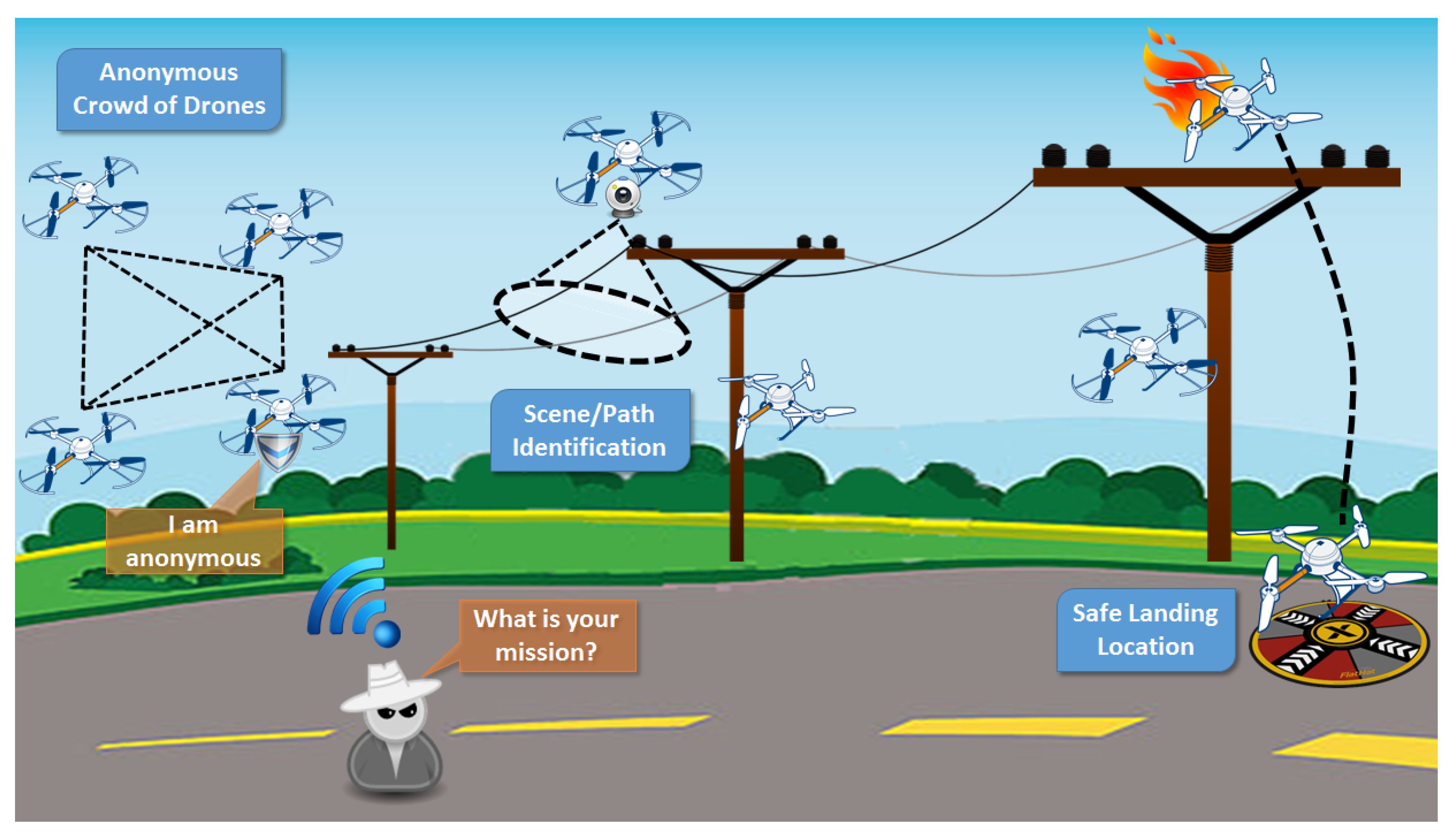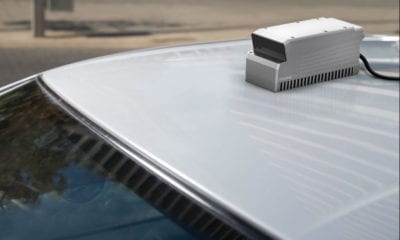IoT
UAV IoT Framework Wants to Protect Drones as “Things”
What started as an initial use in military has led to unmanned aerial vehicles (UAVs) being deployed in various areas. From security to medicine to surveillance to traffic monitoring, the applications of drones nowadays are numerous. On top of that, there has been a stack of heavy investments in the development of this technology – making it fit for carrying out missions in a more efficient and economical way.
The emerging technologies related to drones have significant potential on their development. Sensors, cameras and GPS receivers are all part of what’s known as “the future” of drones. Internet of Things (IoT) services from great heights are also a reality that is not far from today – but there are many issues to be resolved before the effective use of UAVs can be carried through. Some of the main ones include security, privacy and management.
Drones Becoming Active Participants In Everyday Activities
Inspired by this, a group of researchers have decided to propose a model that supports and enables the technologies on UAVs. The introduced framework provisions a holistic IoT architecture that enables the protection of UAVs as “flying” things in a collaborative networked environment. The research titled, “UAV IoT Framework Views and Challenges: Towards Protecting Drones as “Things”“, was conducted by Thomas Lagkas, Vasileios Argyriou, Stamatia Bibi and Panagiotis Sarigiannidis, and published in Sensors 2018.
In times when the Internet of Things (IoT) constitutes an emerging and cutting-edge environment in which the concepts like in the orchestration of a large variety of smart objects, the technology enables objects to become active participants of everyday activities – with tons of promising applications through various communication technologies aligning to the vision of a “smart city”.
In this manner, IoT objects are becoming more complex, heterogeneous and highly distributed. Therefore, the paper by this group of authors aims to overview the new UAV application domains (enabled by technologies such as IoT and 5G), analyze the IoT sensor requirements for drones, summarize the privacy and security challenges of UAV applications – as well as overview solutions for fleet management over aerial networking.
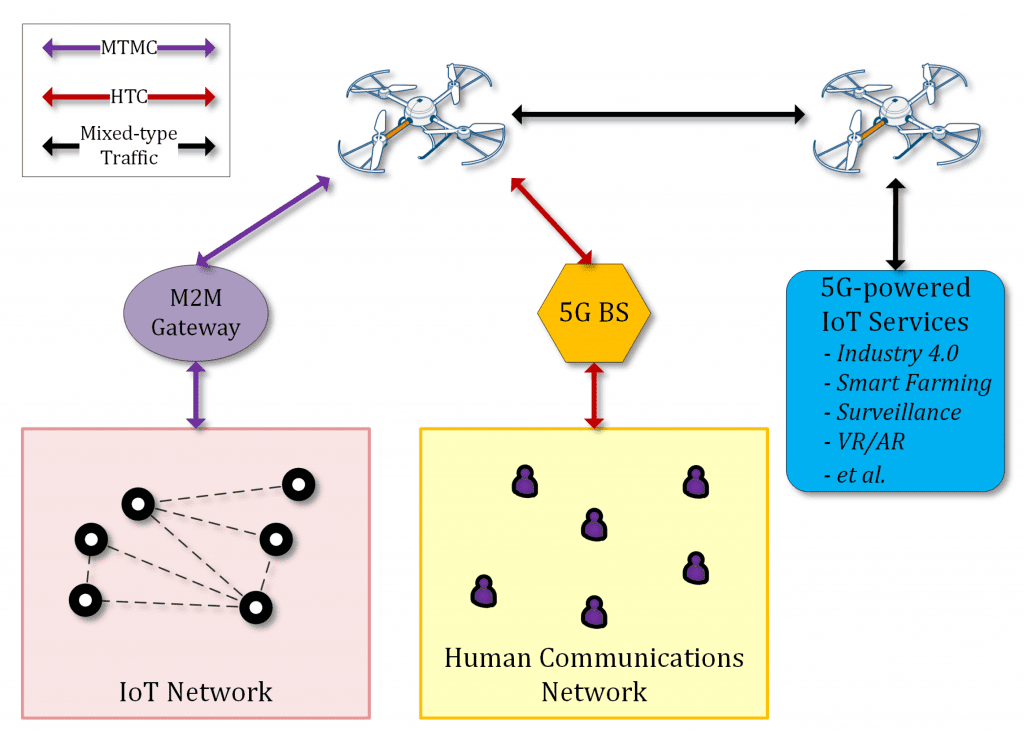
Unmanned aerial vehicle (UAV)-enhanced 5G-enabled Internet of Things (IoT) services.

IoT security layers with UAV extensions.
Introducing A Framework That Supports And Enables UAV Technologies
The authors also built “an advanced framework for end-to-end security and privacy prevention in real, market-based dynamic IoT environments is introduced which includes cutting-edge holistic approaches for advancing the current security and privacy level into a robust, resilient, and high-protected trusted environment,” as described in the paper.
The framework also “supports multilevel and multidomain defence mechanisms in protecting IoT objects (i.e., UAVs) from spoofing, signal-jamming, and physical attacks, RF and mobile-application hacking, protocol abusing, and firmware hacks/sabotage.”
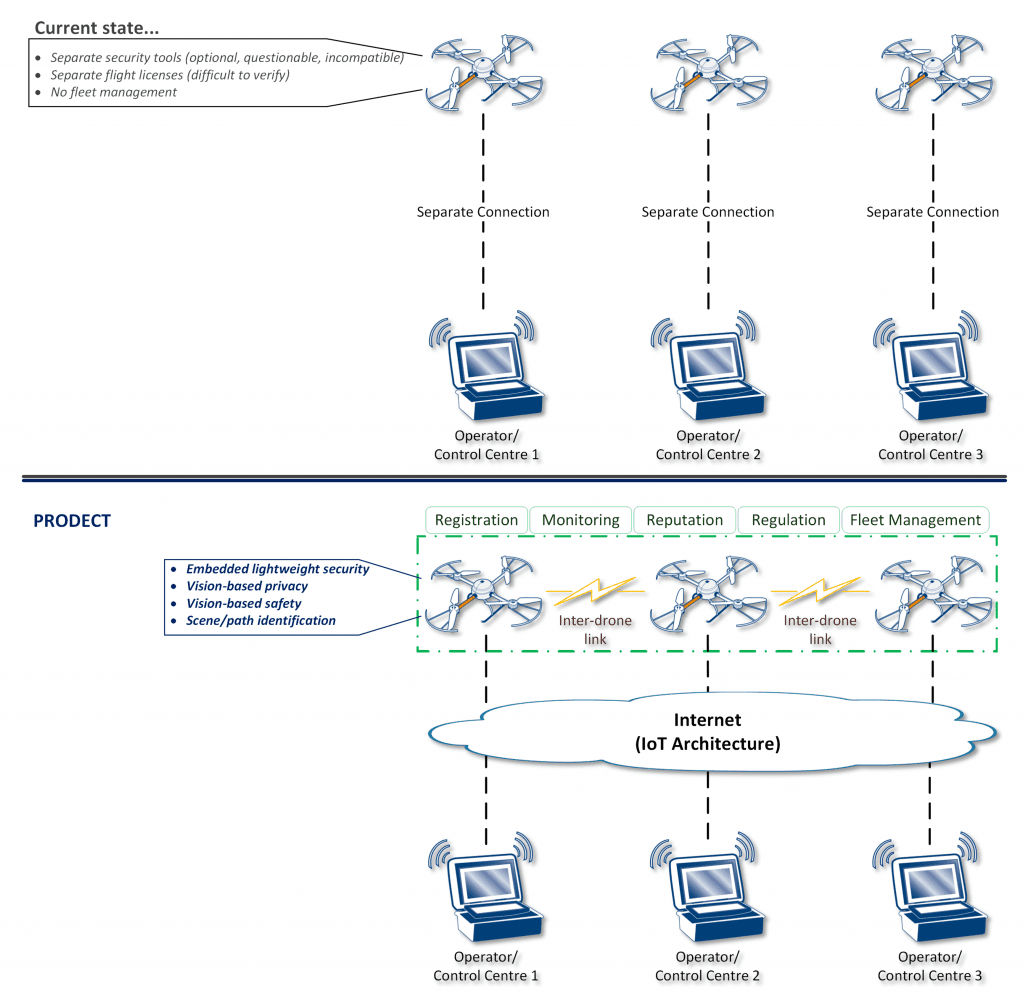
Proposed framework for “flying” things’ secure connectivity in the IoT.
The suggested framework is modulated but not yet validated, as the authors believe. This is why the next logical step for them would be to build a simulation model as a proof of concept model for the proposed UAV secure-connectivity framework. However, all of the metrics related to security, privacy and connectivity must be employed in order to evaluate the framework and communication effectiveness.
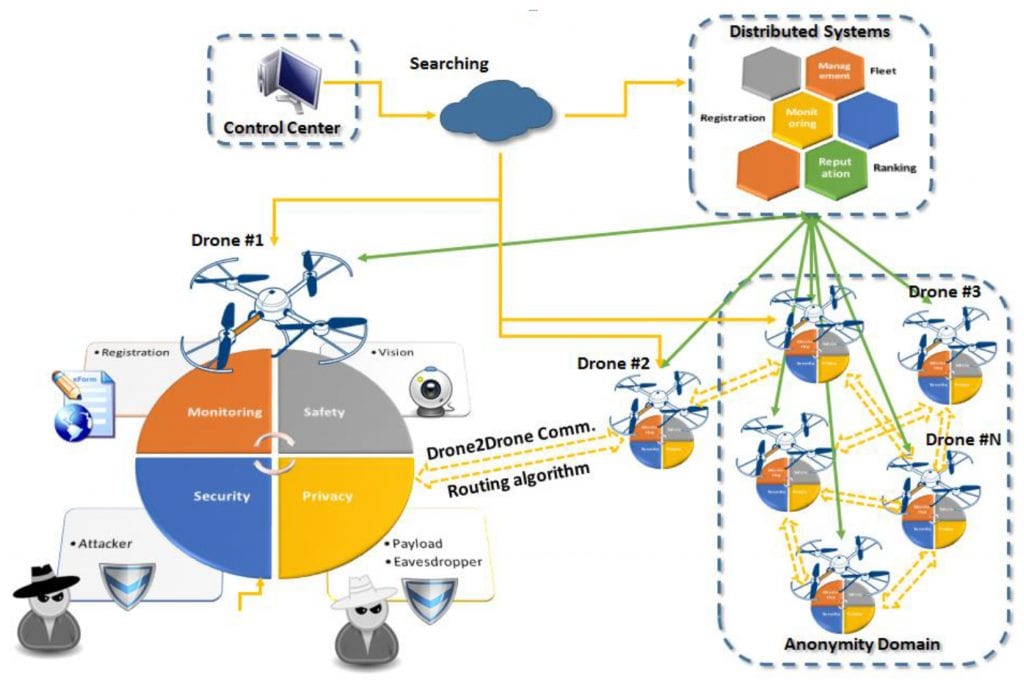
Proposed UAV IoT architecture.
“In the introduced framework, we addressed both “user privacy” and “thing privacy” challenges in the “flying” things domain. To this end, user-privacy prevention is obtained by allowing mobile things to collect information that describe a user in detail, but preserving the privacy of the collected data. The “UAV privacy” concept is applied in mobile things supporting further anonymity techniques, such as k-anonymity, group signature, and crowd of things, customized for drone IoTs,” as the authors noted.
According to them, the introduced architecture supports multiple solutions for security, safety and privacy for mobile IoT towards the provision of services to different users through a set of (distributed) systems.
As such, the system that they propose is based on a drone-to-drone communication using rooting algorithms where the Control Center (CC) is responsible for the management and orchestration of the proposed ecosystem.
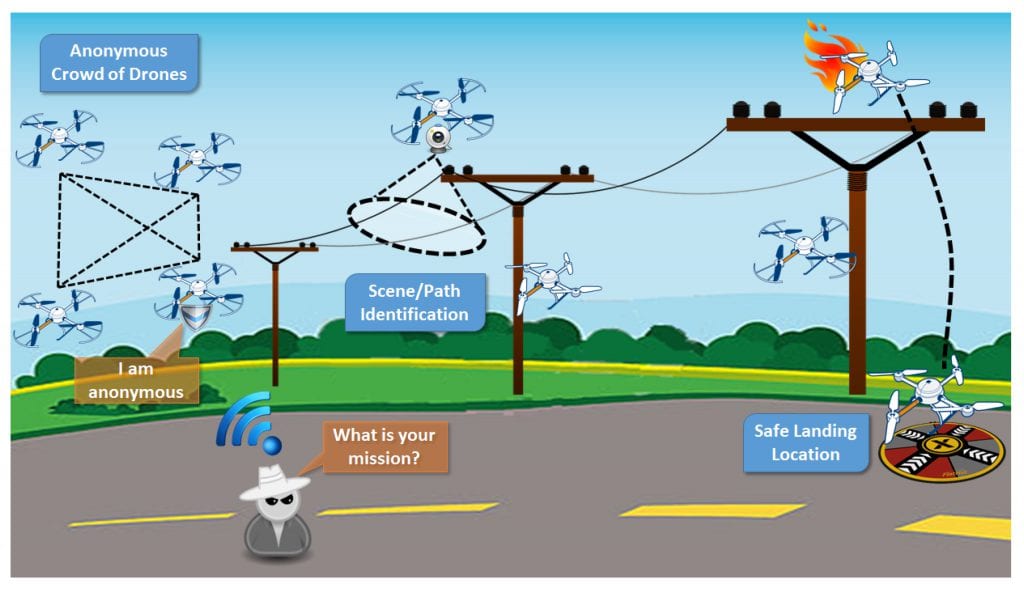
Power-line monitoring application.
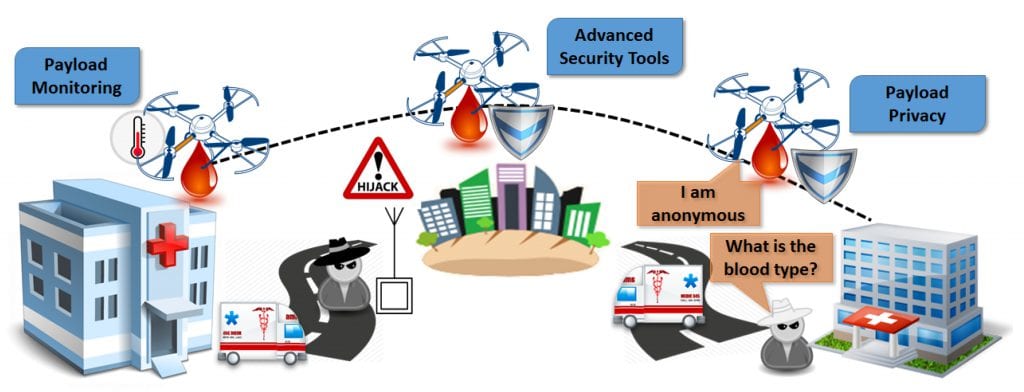
Human blood delivery application.
Final Words
To sum things up, this paper reviews different applications of UAVs as well as different sensors that are essential for the IoT-based scenarios and use cases. Considering drones as IoT devices, the authors analyze the sensor requirements for the corresponding applications and listed all the overview solutions for fleet management over aerial networking.
The framework which they proposed supports and enables these technologies on UAVs, providing advanced security and privacy by incorporating what they refer to as “novel vision-based solutions for scene analysis.”
In the future, the authors plan to evaluate the proposed framework in real-world scenarios.
Citation: UAV IoT Framework Views and Challenges: Towards Protecting Drones as “Things”, Thomas Lagkas, Vasileios Argyriou, Stamatia Bibi and Panagiotis Sarigiannidis, Sensors 2018, 18(11), 4015; doi:10.3390/s18114015 – https://www.mdpi.com/1424-8220/18/11/4015/htm

